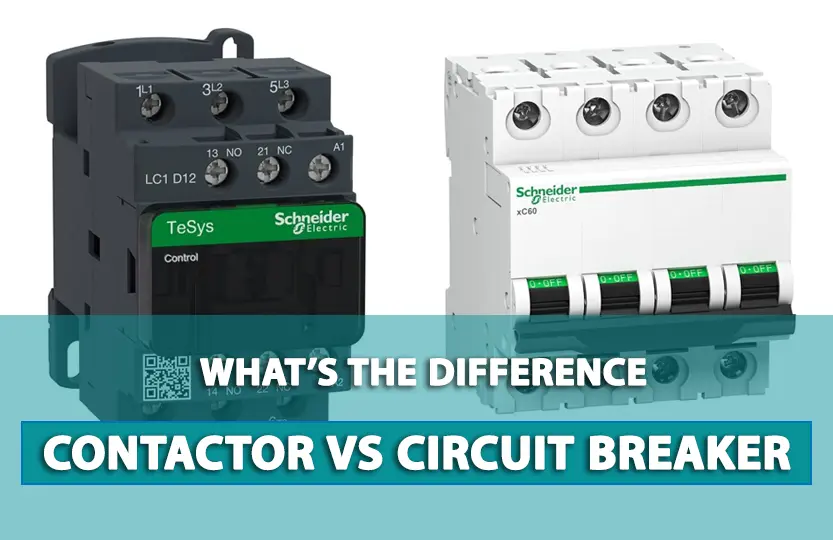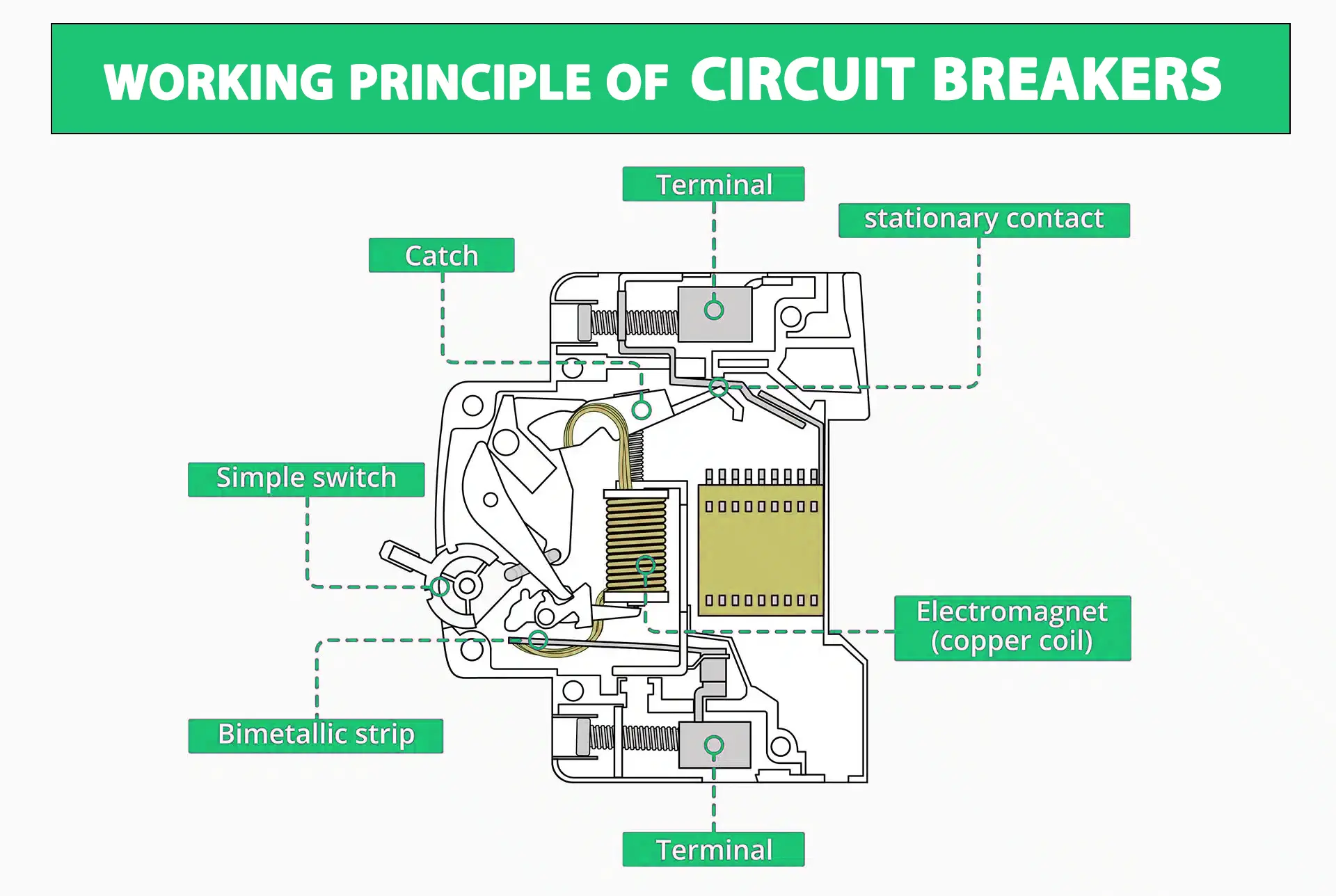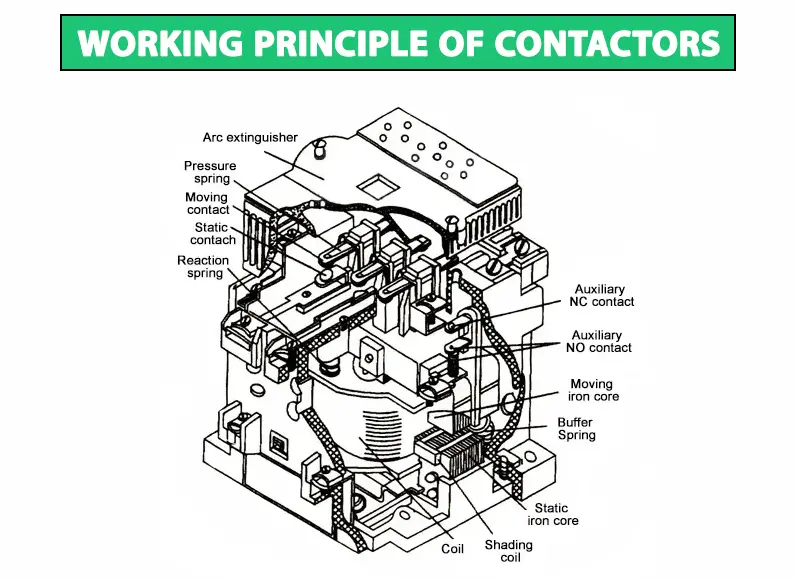
If you’re seeking information on circuit breaker and contactor, it’s crucial to grasp the key distinction between the two. A contactor is managed by an electrical switch linking the load to the power source, whereas a circuit breaker acts as an electrical protective mechanism that isolates the load from the power supply in the event of a fault.
Dive deeper into the comparison between circuit breaker and contactor for a comprehensive understanding.
Definition and Basic Information of Circuit Breaker and Contactor
Circuit breaker
Discover various types of circuit breakers distinguished by their construction. While they feature multiple movable and fixed contacts akin to an electrical contactor, circuit breakers typically engage through pneumatic or mechanical pressure, or electromagnetic interaction.
Unlike a contactor, a circuit breaker includes voltage and current sensing circuits for automatic operation. It autonomously responds to faults, making it distinct in functionality from a contactor. Explore more about the intricate workings of circuit breakers for a deeper understanding.
Contactor
Unveiling the essence of a contactor:
a fundamental component with multiple movable and fixed contacts designed for reliable service under electromechanical attraction. Equipped with an electromagnetic coil for operation at low current and voltage, a contactor seamlessly connects the load to the power source when control is applied, enhancing the efficiency of electrical systems.
Delve deeper into the function and utility of contactors to illuminate their significance in electrical applications.
Read More :
What is a Contactor? Introduction and applications of Contactors
Working principle of Circuit Breaker and Contactor
Working Principle of Circuit Breakers

Exploring the operational framework of a circuit breaker unveils its intricate dynamics. The mechanism consists of two pivotal metallic contacts – fixed and moving – alongside an operating coil. Under normal circumstances within closed circuits, these contacts facilitate the smooth flow of current by touching each other.
The convergence of moving contacts is achieved through mechanical pressure or compressed air, harnessing energy stored within the mechanism.
In the event of an overload, the coil accumulates potential energy, engaging a plunger mechanism that exerts force on the moving contacts. This critical interplay releases the stored energy, initiating the separation of contacts. Subsequently, the breaker’s internal circuits open, effectively halting the electric current flow to safeguard the system against damage.
An essential facet to grasp is the phenomenon of arcing. When current traverses a gap, plasma discharges manifest as the arc. While such occurrences can transpire in household electrical wiring, they are strategically managed during circuit breaker operations to avert system impairment and fire hazards.
The overarching goal of a circuit breaker is to methodically regulate and thwart potential damages, underscoring its pivotal role in maintaining electrical safety and stability.
Working Principle of Contactors

The operational mechanism of a contactor hinges on the generation of an electromagnetic field, stimulating current flow upon attachment of the coil. This initiates the forward movement of the contact, bolstered by the electromagnet’s force that binds the fixed and moving contacts securely.
Upon de-energization, the contactor’s coil reverts to its electromagnetic state, restoring the previous position and halting current circulation in the circuit. In scenarios where the contactor is powered by AC, a portion of the coil remains shaded, thereby delaying the magnetic flux in the core’s center. This deliberate delay mitigates core buzzing, enhancing operational efficiency.
Moreover, internal tipping components are integral to facilitating swift actions, enabling rapid closure and opening of the contactors. As power is supplied from the source to the switch, activating the contactor’s coil initiates the attraction of the moving center.
Consequently, the contactor closes, prompting immediate motor activation. Subsequent switch deactivation prompts the electromagnetic field to revert to its initial state swiftly, instantaneously cutting off the power supply.
The Operational Differences Between Circuit Breaker and Contactor
Understanding the distinctive functionalities of circuit breaker and contactor is crucial in the realm of electrical systems. Delving into the dissimilarities between a contactor and a circuit breaker is a common point of interest for engineers and students alike. Allow us to unravel and compare these two essential components.
Electrical Contactor
The main role of a contactor in an electrical system is to connect the load to the current at high voltage levels efficiently. Contactors offer several advantages, including rapid opening and closing capabilities. A moving contactor becomes essential for precise control or when transitioning between high and low voltage requirements.
Circuit Breaker
Conversely, a circuit breaker operates automatically by interrupting the current supply in the event of a short circuit or overload. Professionals have the ability to manually interact with a circuit breaker by connecting it to electrical contacts. Therefore, during regular operation, this mechanism functions similar to a switch.
Other Important Differences Between Circuit Breaker and contactor:
n electronic contactor serves as a straightforward switching device, while a circuit breaker functions as a protective system. The main role of a contactor is power control, whereas a circuit breaker focuses on protection.
Under normal conditions, a contactor operates, whereas a circuit breaker only acts in response to faults. Contactors typically handle medium voltage levels, contrasting with circuit breakers that handle high voltage scenarios.
Using a contactor may result in more sparking and flashing, whereas circuit breakers eliminate this risk. Contactors do not support automation, whereas circuit breakers can automatically start and stop when faults arise.
In a contactor, electromagnetism enables the connection between movable and fixed contacts, while circuit breakers require both mechanical and electromagnetic pressure for the connection. Contactors lack ARC quenching mechanisms, whereas high voltage circuit breakers have this safety feature.
Notably, contactors lack an electric voltage sensing system, unlike circuit breakers that incorporate current and voltage sensing components. For further details, feel free to reach out to GeeTech.
Key Differences Between Siemens Sirius Contactors and Schneider Electric Contactors
Siemens Sirius Contactor: Reliable Power Control Solutions
Siemens Sirius Contactor: Known for their reliable medium voltage applications, Siemens Sirius contactors are designed for efficient power control. [Explore Siemens Sirius Contactors] to find more about their features and applications, ensuring you select the right contactor for your needs.
Schneider Electric Contactor: Advanced Industrial Applications
Schneider Electric Contactor: Schneider offers a variety of contactors suitable for different industrial scenarios, emphasizing safety and performance. [Check Schneider Electric Contactors]to understand how they can improve your systems with advanced technology.



















